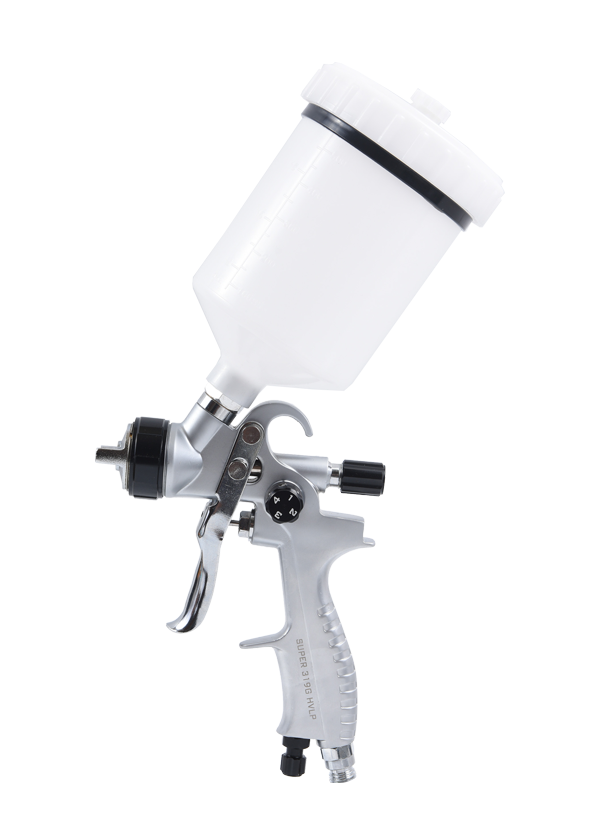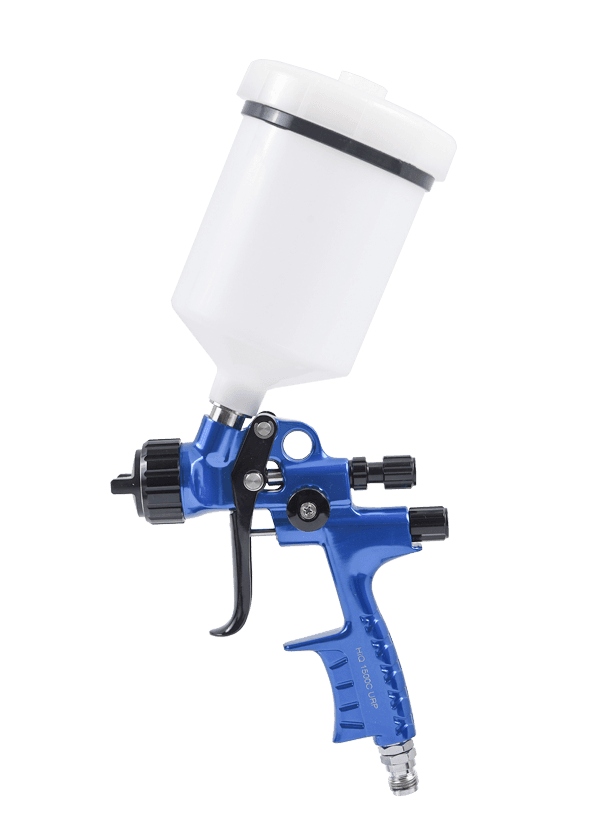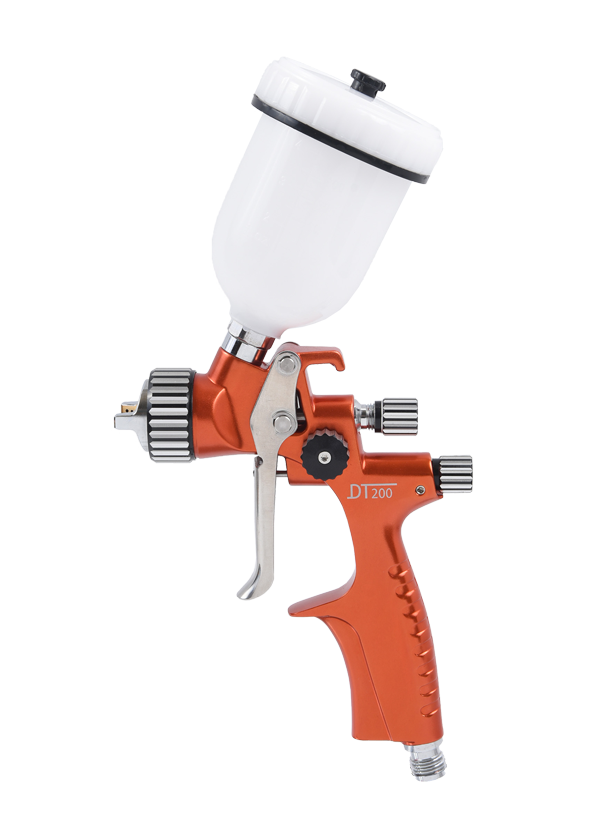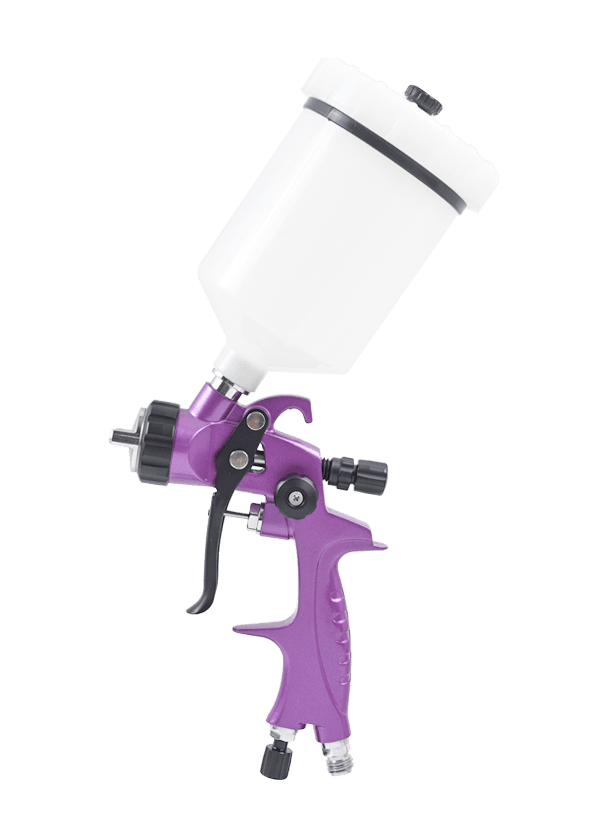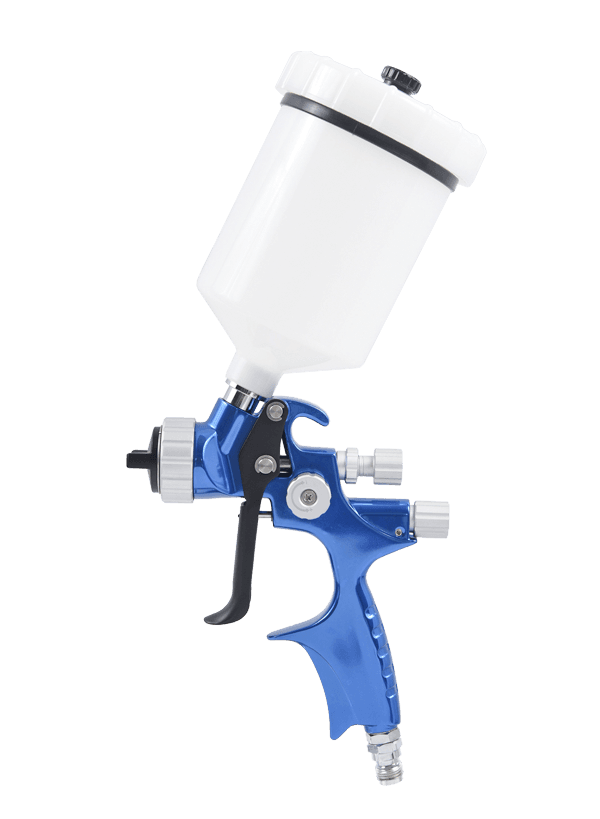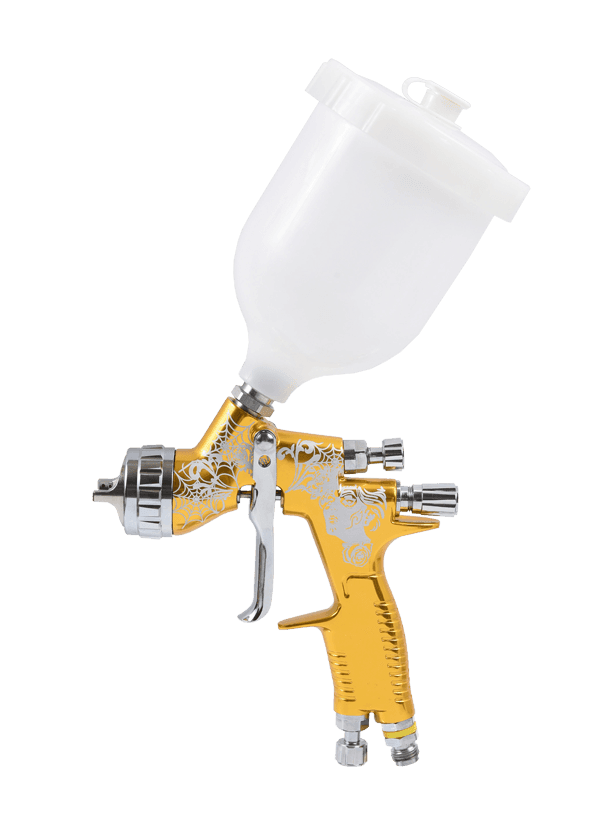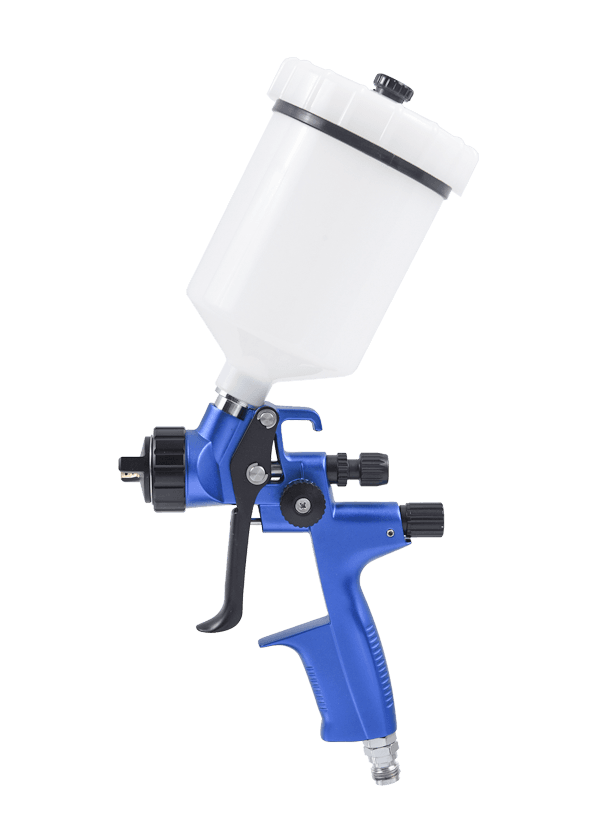Controlling overspray when using a mini spray gun is important for achieving precise and efficient coatings while minimizing waste. Here are several techniques that can be employed to control overspray when using a mini spray gun:
Adjust Air Pressure:
Lowering the air pressure on the spray gun can help reduce overspray. However, finding the right balance is crucial to maintaining proper atomization and coating quality.
Select the Right Nozzle Size:
The nozzle size on the spray gun affects the spray pattern. Choosing a smaller nozzle size can result in finer atomization, reducing overspray.
Choose the Correct Air Cap:
The air cap plays a role in shaping the spray pattern. Selecting an air cap that allows for adjustments in fan width and pattern can help control overspray.
Adjust Fan Pattern:
Narrowing the fan pattern can concentrate the spray on the target area and minimize overspray. Many mini spray guns have adjustable fan patterns for flexibility.
Use HVLP Technology:
High Volume Low Pressure (HVLP)
spray guns operate at lower air pressures, which can help reduce overspray. HVLP technology is designed for more efficient transfer of paint to the surface.
Maintain Proper Distance:
Keeping the spray gun at the recommended distance from the surface helps control overspray. Holding the gun too close can result in excessive material application and overspray.
Employ Masking Techniques:
Masking off areas that are not intended for coating with painter's tape and using shields or barriers can prevent overspray from reaching unwanted surfaces.
Work in a Controlled Environment:
When possible, work within a spray booth or an enclosed area designed for painting. This helps contain overspray and provides a controlled environment for the application.
Use Low-Volume Cups:
Some mini spray guns come with low-volume cups, which can help reduce the amount of material in the gun, resulting in less overspray.
Optimize Material Viscosity:
Ensure that the material being sprayed has the correct viscosity. Material that is too thick or too thin can contribute to overspray issues.
Practice Proper Technique:
Implementing a consistent and controlled spraying technique is essential. This includes maintaining a steady hand, moving the spray gun at a consistent speed, and using even strokes.
Select the Right Spray Gun:
Choose a mini spray gun that is suitable for the specific application. Different models may have features that aid in overspray control.
Use Anti-Static Additives:
In some cases, adding anti-static agents to the coating material can help reduce overspray by preventing the material from clinging to surfaces.
Optimize Spray Gun Settings:
Experiment with the settings on the spray gun, such as fluid flow, pattern width, and air pressure, to find the optimal combination for the specific application.
Consider Gravity Feed:
Gravity feed spray guns often produce less overspray compared to suction feed guns. Gravity feed guns rely on gravity to feed material to the nozzle, resulting in a more controlled flow.
By combining these techniques, operators can effectively control overspray and optimize the efficiency and quality of their spray applications with a mini spray gun. It's important to experiment with settings and techniques to find the right combination for each specific project and coating material.

 English
English Español
Español
